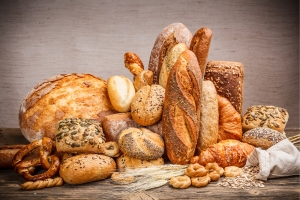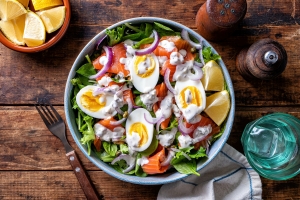I remember the day I was diagnosed with type 2 diabetes. It felt like my whole world turned upside down. Suddenly, I had to learn a new language – carb counting, glycemic index, insulin sensitivity… it was overwhelming! And one of the biggest challenges? Figuring out how to eat healthy, balanced meals consistently, especially with a busy schedule. I quickly realized that if I didn’t plan ahead, I was setting myself up for failure. Did you know that according to the American Diabetes Association, people with diabetes are often encouraged to plan their meals to better manage blood glucose levels? It’s true! That is where my meal prep journey began. This article isn’t just about throwing some ingredients together; it’s about giving you the tools and strategies to take control of your health, simplify your week, and actually enjoy the food you’re eating. These hacks helped me.
Understanding the Diabetic-Friendly Meal: The Core Principles

Managing diabetes through diet is primarily about controlling blood sugar (glucose) levels. This doesn’t mean eliminating all carbs (they’re an important energy source!), but it does mean being mindful of the type and quantity of carbs you consume. Here’s the breakdown:
1- Focus on Non-Starchy Vegetables

These are your superstars! They’re low in carbohydrates and packed with vitamins, minerals, and fiber. Think leafy greens (spinach, kale, lettuce), broccoli, cauliflower, asparagus, bell peppers, onions, mushrooms, zucchini, and more. Fill half your plate with these!
2- Choose Lean Protein

Protein helps you feel full and satisfied, and it has a minimal impact on blood sugar levels. Opt for lean sources like:
- Chicken breast (skinless)
- Turkey breast (skinless)
- Fish (salmon, tuna, cod, etc.)
- Lean beef (in moderation)
- Beans and lentils
- Tofu and tempeh
- Eggs
3- Smart Carbs: Quality and Quantity Matter

Not all carbs are created equal. Focus on complex carbohydrates that are high in fiber, as they are digested more slowly and cause a less dramatic spike in blood sugar. These include:
- Whole grains (brown rice, quinoa, whole-wheat bread, whole-grain pasta, oats)
- Starchy vegetables (sweet potatoes, corn, peas – in moderation)
- Fruits (berries, apples, pears – with the skin on, when possible)
- Be mindful about PORTION SIZE, Even with healthy Carbs.
3- Healthy Fats

Include healthy fats in your meals, as they help with satiety and nutrient absorption. Good sources include:
- Avocado
- Nuts and seeds (almonds, walnuts, chia seeds, flaxseeds)
- Olive oil
- Fatty fish (salmon, tuna)
4- The Plate Method

A simple visual guide is the “plate method.” Imagine dividing your plate into sections:
- 1/2: Non-starchy vegetables
- 1/4: Lean protein
- 1/4: Smart carbs (whole grains or starchy vegetables)
- Add a small amount of healthy fat.
5- Glycemic Index (GI) and Glycemic Load (GL)
These are more advanced concepts, but understanding them can be helpful.
- GI: Measures how quickly a food raises blood sugar levels. Low-GI foods are generally preferred.
- GL: Takes into account both the GI and the amount of carbohydrates in a serving. It provides a more complete picture of a food’s impact on blood sugar.
- Many online resources can help search food’s GI and GL.
Is This Meal Diabetic-Friendly? Ask Yourself These Questions:

- Does it contain a good balance of non-starchy vegetables, lean protein, and smart carbs?
- Are the carbohydrate portions appropriate? (Consult with a registered dietitian or certified diabetes educator for personalized guidance.)
- Does it include healthy fats?
- Is it relatively low in added sugars and processed foods?
- Consider the GI and GL.
Now that we have a solid foundation, let’s move on to the meal prep hacks that will make creating these diabetic-friendly meals a breeze!
1. The Magic of Mason Jars

Seriously, these things are amazing. Mason jar salads are a lifesaver for quick lunches. Layer your dressing at the bottom (this is key!), then add your heartier veggies (like carrots, bell peppers, or cucumbers – things that won’t get soggy), followed by proteins (grilled chicken, chickpeas, lentils, or tofu), and finally, your leafy greens on top. This keeps everything crisp and prevents that dreaded soggy salad situation. When you’re ready to eat, just shake it up and enjoy! I even prep a few different variations on Sunday so I have variety throughout the week, switching up the proteins and dressings.
2. Embrace the Sheet Pan

Sheet pan dinners are my weeknight heroes. They’re the ultimate “set it and forget it” meal. Toss your favorite non-starchy vegetables (broccoli, Brussels sprouts, asparagus – all great choices!) and a lean protein (like salmon, chicken breast, or lean turkey) with some olive oil, herbs (rosemary and thyme are my go-to’s), and spices, then roast it all on one pan. Minimal cleanup, maximum flavor! You can even get creative with different spice blends – try a lemon-herb mix one week, and a smoky paprika blend the next.
3. One-Pot Wonders

Similar to the sheet pan concept, one-pot meals are a fantastic way to minimize dishes and effort. Think hearty stews, chili, or even a big batch of quinoa with roasted vegetables and beans. The beauty of these meals is that they often taste even better the next day, as the flavors have time to meld. Making them perfect for leftovers. I personally love making a big pot of lentil soup on the weekend – it’s packed with fiber and protein, and it freezes beautifully.
4. Pre-Portioned Snacks are Your Friends

This is absolutely crucial for managing those between-meal cravings and preventing blood sugar spikes. We’ve all been there – that 3 PM slump hits, and suddenly you’re reaching for anything in sight. Divide snacks like almonds, walnuts, Greek yogurt, a small piece of fruit with cheese, or pre-cut veggies with hummus into individual containers or baggies at the beginning of the week. This way, you’re less tempted to reach for something less healthy when hunger strikes, and you have perfect portions all the time. I like to keep a stash of pre-portioned snacks in my desk drawer at work, in my car, and in my bag when I’m on the go.
5. Cook Once, Eat Twice (or Thrice!)

This is a fundamental meal prep principle. Whenever you’re cooking, double (or even triple!) the recipe. This is especially helpful for things like grilled chicken, roasted vegetables, or brown rice. Use the leftovers to create different meals throughout the week. For example, leftover grilled chicken can be added to salads, wraps, stir-fries, or even tossed into a quick soup. It’s a huge time-saver, and it prevents you from getting bored with the same meal.
6. Freezer-Friendly Favorites

The freezer is your best friend when it comes to meal prepping, truly. Soups, stews, chili, casseroles (think crustless quiches or vegetable bakes), and even individual portions of cooked grains (like quinoa or brown rice) freeze exceptionally well. Make a big batch, portion it out into freezer-safe containers, and freeze it for those busy nights when you don’t have time (or energy!) to cook. Just be sure to label and date everything so you know what you’ve got and when it was made!
7. Don’t Be Afraid to Repurpose

Getting bored with the same old meals? No problem – that’s the beauty of having those prepped components! Repurpose your cooked ingredients in new and exciting ways. Leftover roasted vegetables can be blended into a creamy soup, added to an omelet or frittata, or used as a topping for whole-wheat toast. Grilled chicken can become the star of a delicious chicken salad sandwich (on whole-wheat bread, of course!), or added to a quick and easy lettuce wrap. Get creative and have fun with it!
You’ve Got This! (And I’d Love to Hear From You!)
Meal prepping doesn’t have to be overwhelming or feel like a chore. By incorporating these simple hacks, you can create delicious, diabetic-friendly meals that will save you time, energy, and help you stay on track with your health goals. Remember, it’s a journey, not a race. Start small, experiment with different recipes and techniques, and find what works best for you and your lifestyle.
I’m genuinely passionate about helping others navigate the challenges of diabetes, because I’ve been there myself. What are your favorite go-to diabetic-friendly meals or meal prep tips? Share your ideas and experiences in the comments below – I’d love to hear from you and build a supportive community together! Let’s empower each other on this journey to better health!
References
- Lifestyle Intervention and Metformin Effects on Preventing Progression to Diabetes
- The effect of meal preparation training on self-efficacy and glycemic control in patients with type 2 diabetes.
- Meal planning is associated with food variety, diet quality and body weight status in a large sample of French adults
- Systematic review and meta-analysis of dietary carbohydrate restriction in patients with type 2 diabetes.
- Impact of a 6-month diabetes self-management support (DSMS) intervention on glycemic control in Mexican Americans with type 2 diabetes
- Glycemic index and glycemic load for foods: a systematic review
- Association of Dietary Protein Intake With All-Cause and Cause-Specific Mortality in US Adults With and Without Diabetes
- Dietary fat intake and risk of type 2 diabetes: a systematic review and dose-response meta-analysis of prospective observational studies
- Effect of a low-carbohydrate diet on appetite, blood glucose levels, and insulin resistance in obese patients with type 2 diabetes.







